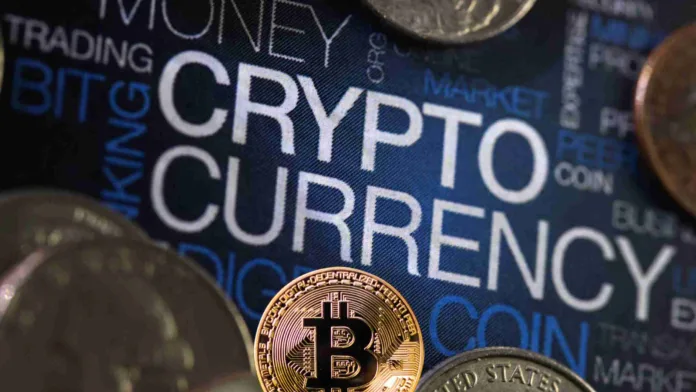Cryptocurrency adoption in India has grown remarkably in recent years, despite regulatory uncertainties. In 2025, Indian investors are more aware, strategic, and risk-conscious when it comes to investing in digital assets. With over 20 million crypto users in the country and a thriving blockchain developer community, India is emerging as a significant player in the global crypto ecosystem.
This article presents a well-researched analysis of the best cryptocurrencies to invest in for Indian investors in 2025, taking into account factors like technology, use-case, market performance, community trust, and regulatory considerations.
Parameters for Indian Crypto Investors
Before diving into specific cryptocurrencies, Indian investors should consider:
- Regulatory Climate: Crypto is not illegal in India, but it’s not legal tender either. The government has introduced a 30% tax on profits and 1% TDS on transactions.
- Utility & Use Case: Choose coins with real-world utility, strong partnerships, and growing adoption.
- Volatility & Risk Profile: Cryptocurrencies are volatile assets; diversify and only invest what you can afford to lose.
- Storage & Security: Use trusted wallets and exchanges (like CoinDCX, WazirX, or international ones like Binance or Coinbase).
Top Cryptocurrencies to Consider in 2025
1. Bitcoin (BTC)
- Market Cap: $1.4+ Trillion (as of 2025)
- Why Invest:
- Still the most trusted and dominant cryptocurrency.
- Institutional adoption continues to grow (ETFs, hedge funds, nation-states).
- Supply capped at 21 million – strong hedge against inflation.
- Risk Level: Moderate
- Ideal For: Long-term investors and those looking for portfolio stability.
2. Ethereum (ETH)
- Market Cap: $600+ Billion
- Why Invest:
- Leading smart contract platform powering DeFi, NFTs, and DAOs.
- Upgrades like Ethereum 2.0 and Danksharding improve scalability and lower gas fees.
- Backed by strong developer activity and major corporate partnerships (e.g., JPMorgan, Meta).
- Risk Level: Moderate
- Ideal For: Tech-savvy investors and those looking to invest in infrastructure-layer cryptos.
3. Polygon (MATIC) – India-Originated Project
- Market Cap: ~$12 Billion
- Why Invest:
- Scalable Ethereum Layer-2 solution; ideal for low-cost, high-speed transactions.
- Partnerships with global brands like Disney, Starbucks, and Reddit.
- Strong developer ecosystem; made in India, aligns with local sentiment.
- Risk Level: Medium
- Ideal For: Indian investors looking for local innovations with global potential.
4. Solana (SOL)
- Market Cap: ~$60 Billion
- Why Invest:
- High-speed, low-cost blockchain gaining popularity for DeFi and gaming.
- Strong ecosystem growth, NFT marketplaces, and consumer dApps.
- Solana Mobile (Saga Phone) is pushing Web3 adoption into hardware.
- Risk Level: Medium to High
- Ideal For: High-risk investors betting on scalable, fast blockchain ecosystems.
5. Chainlink (LINK)
- Market Cap: ~$10 Billion
- Why Invest:
- Dominant oracle network connecting smart contracts to real-world data.
- Integral to DeFi platforms across multiple blockchains.
- Strong enterprise integrations with Google Cloud, Swift, and more.
- Risk Level: Medium
- Ideal For: Investors looking for infrastructure and middleware crypto solutions.
6. Toncoin (TON)
- Market Cap: ~$15 Billion
- Why Invest:
- Developed by Telegram’s team, integrated into Telegram’s 900M+ user base.
- Gaining traction for payments, microtransactions, and Web3 identity.
- Emerging ecosystem with gaming and DeFi dApps.
- Risk Level: Medium
- Ideal For: Investors interested in social and messaging platform-integrated crypto.
7. Render (RNDR)
- Market Cap: ~$5 Billion
- Why Invest:
- Decentralized GPU rendering platform powering AI, metaverse, and 3D design.
- Positioned at the intersection of AI + crypto – a booming 2025 trend.
- Supported by industry veterans and creatives (including Apple and Pixar alumni).
- Risk Level: High
- Ideal For: Future-forward investors interested in AI, gaming, and design.
Honorable Mentions
| Coin | Reason |
| XRP (Ripple) | Cross-border payments with banking partners; regulatory clarity in the U.S. |
| Arbitrum (ARB) | Leading Ethereum Layer-2 scaling solution with strong DeFi adoption. |
| Filecoin (FIL) | Decentralized storage; relevant in data-heavy industries like AI and Web3. |
| INJ (Injective Protocol) | Fast-growing DeFi layer-1 chain focusing on derivatives and synthetics. |
Emerging Trends to Watch in 2025
- AI + Crypto Fusion: Projects like Render and Ocean Protocol are bridging AI and blockchain.
- Real World Assets (RWA): Tokenization of bonds, real estate, and stocks is going mainstream.
- CBDCs and Regulation: India’s digital rupee (e₹) and global CBDC experiments may shape crypto utility and compliance.
- DePIN (Decentralized Physical Infrastructure Networks): Projects combining physical devices (e.g., IoT, telecom) with blockchain, like Helium (HNT), are trending.
Investment Strategy Tips for 2025
- Diversify: Don’t put all funds in a single coin. Diversify across categories like Layer 1s, DeFi, oracles, AI, and utility tokens.
- Use SIPs: Apply Systematic Investment Plans (SIPs) via Indian platforms like CoinSwitch or CoinDCX.
- Watch the Rupee-USD Rate: Crypto prices are USD-based. A weaker INR can increase investment cost.
- Stay Updated: Follow SEBI, RBI, and Finance Ministry updates for regulation changes.
Conclusion
In 2025, cryptocurrency in India is no longer a fringe financial instrument. It is becoming an integral part of diversified investment portfolios. While Bitcoin and Ethereum remain strongholds, homegrown and high-utility coins like Polygon (MATIC) and emerging sectors like AI (RNDR) offer significant upside.
Smart investors should stay educated, comply with tax laws, and invest with a long-term vision rather than chasing overnight gains. With careful planning, crypto can be a rewarding component of your wealth-building journey in India.
Disclaimer: This article is for informational purposes only. Cryptocurrency investments are subject to market risks. Always conduct your own research or consult a financial advisor before investing.

